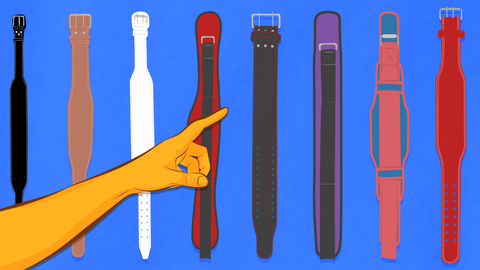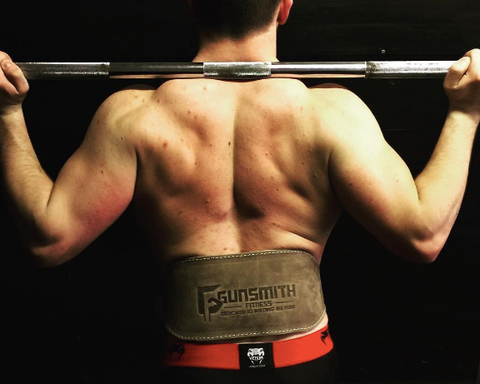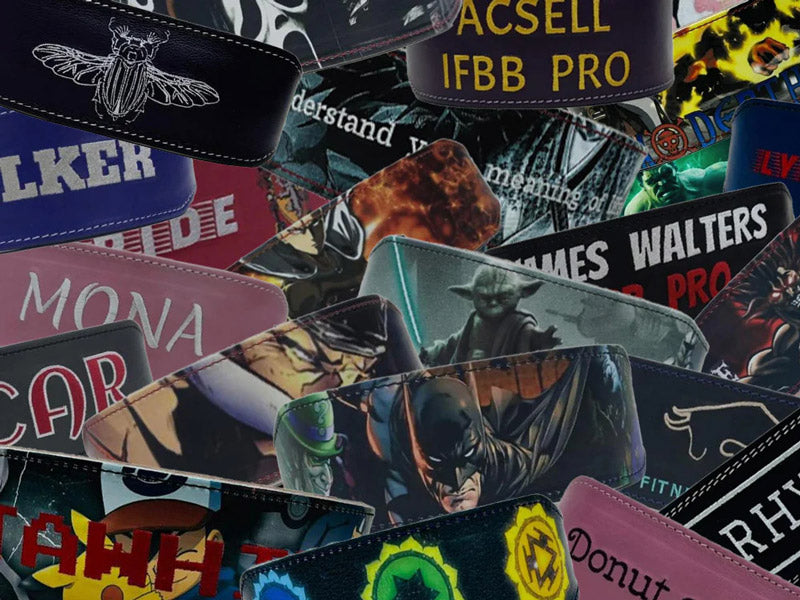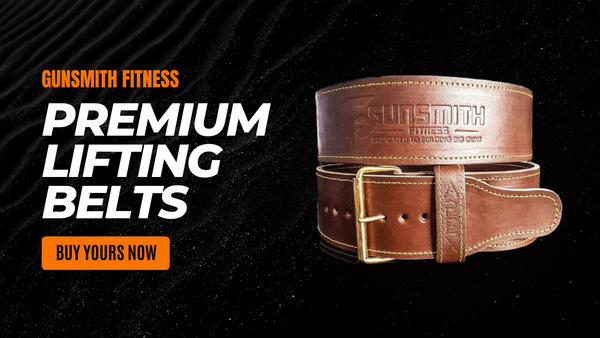
How to Find the Best Weightlifting Belt: Your Go-To Guide 2024
Why a Weightlifting Belt is Important
So you’ve been going to the gym a while, you’re making solid gains, you’re smashing your personal bests, and you’ve been taking those gym mirror selfies with that lighting that makes your abs pop.
Don’t shake your head you know what I'm talking about. Whether you’re into crossfit, weightlifting, powerlifting, or strongman training, you think it’s about time you dropped some cash on a belt.
You google “weightlifting gym belt” or "gym belt" - and you go glassy eyed.
What is the Right Gym Belt for You?
There’s single prong belts, double prong belts, lever belts and then there’s the different shapes! Those straight belts, then the contoured belts, then the wider contoured belts. But there’s more, do you go for a nylon belt, a leather belt, a 5mm/10mm or 13mm thick belt?
What about the color? Retro brown makes you lift more, right? RIGHT?!
You sink your head in your hands and sob. Or you don’t. Just me then? Oh...
How to Choose the Best Weightlifting Belt
Now, before we dive into finding the best weightlifting belts money can buy, let’s talk about why you need one. At Gunsmith Fitness, we know every lifter has different reasons for buying a belt. While we’re all a little different, a few main reasons stand out.
For most people, a belt either offers safety or it helps lifters lift more weight and break down plateaus. In either scenario, you need a good belt. You want something thick and sturdy that’s sure to keep you safe while moving around heavy weights.
That’s where we come in. Below we discuss how you can find the perfect belt type for your workouts. So let’s dive in and make some damn gains.
Here’s what to pay attention to when buying a weightlifting belt:

Leather vs. Velcro
No doubt you’ve seen the nylon belts with the velcro, you’ve perhaps even thought ‘oh they look cool.' Well readers, although velcro lifting belts allow you to keep the back warm and offer a degree of support, they are not a serious piece of kit.
They can be useful if you’re back is still, and they can be useful if performing lifts that a leather belt would interfere with (such as Olympic lifts) but generally, leather is the way to go. It doesn’t end there, belts come in top grain leather or split leather, most commonly as suede.
Top grain leather is the top of the hide of the animal. These are much more durable. Suede is less durable and nowhere near as strong. You’re a serious lifter, aren’t you? Of course, you are, and serious lifters use leather weightlifting belts.
- Winner: Leather
Single Prong vs. Double Prong
We are into murkier waters now. ‘Oh those double prong belts look nice’ I hear you say. Some of them do, some of them look awful. Anyway, we aren’t here to argue over aesthetics so let’s get back to it.
A double prong lifting belt is generally unnecessary and annoying to use. The idea is that the extra prong distributes the stress evenly making it less likely to fail. If you’re not buying a piece of crap, then this is something you don’t have to be concerned about. Double prong belts can be a pain to put on and take off.
You know that belt you use to keep your pants up? Yeah, that one. Only has one prong, doesn’t it! The single prong belt is the better of the two, and it’s not even a close contest.
- Winner: Single Prong
Single Prong vs. Lever
In the words of the great Connor MacLeod, “There can be only one!” Or can there?
Lever lifting belts are considerably easier and quicker to use. Once you have your lever attached to the correct hole setup on the belt, you’re ready to go. After you’ve finished with your lift, you simply open the lever and off it goes. When you’ve been lifting heavy, this is a godsend compared to a single prong belt.
Too good to be true? Maybe. Say you’re putting on weight or losing weight, you’ll need to dig out the screwdriver to move the lever to a tighter/looser setup, that’s no fun. Besides, a lot of the lever belts out there are made with shoddy materials. That pewter lever belt you bought on Amazon? That’s going to break one day pal, hopefully not during your lift!
Spend a bit more and go for a stainless steel lever belt, it’s worth it. Ultimately, it depends on your preference. Go for a single prong belt if you prefer adjustability and reliability or go for a lever belt if easy on/off is important.
- Winner: It’s a draw, folks!

How Thick Should I Go?
Well, it depends on what you’re looking for, if you’re into powerlifting and strongman training, 10mm and 13mm are the obvious answer.
If you’re a casual lifter or gym goer, then 5mm may meet your needs perfectly, giving you the support you need without being too bulky.
What About the Belt Width?
Again, depends on your needs. If you’re a powerlifter, then you want a belt that is International Powerlifting Compliant (IPF) and that means 4” is the maximum allowable width. Powerlifters will go for a non-tapered straight belt, however, there are examples where the tapered belt can meet your needs.
A tapered lifting belt has less coverage on the front, meaning it’s less likely to dig into your ribs or hip bones. That doesn’t sound like fun does it?
That said, the primary reason for a belt is to give your core something to push against!

The Ideal Weightlifting Belt For You
There’s no one size fits all for a belt, it depends on your needs. A velcro contoured belt might be ideal for casual gym goers, and the tapered belt might be perfect for those wanting a bit more support.
However, for powerlifters, then it’s a clear choice of 10/13mm thick with a single prong or a lever depending on your preference.
To Conclude
Here at Gunsmith Fitness, we focus on quality. I’ve traveled far and wide for the finest leathers and the sturdiest metals. I’ve seen things you people wouldn’t believe. Attack ships on the shoulder of Orion. I watched C-beams glitter. Stop right there, no you haven’t, you’ve just watched Blade Runner, now get on with the article.
Should you buy a belt from us, we offer a lifetime guarantee because we go to the gym, too. So we only make products we're confident in using ourselves. Day in and day out. Click here to buy the perfect belt for your needs!






